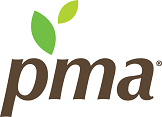July Market Update
- Posted on 7 Jul, 2025
As summer hits full stride, the U.S. freight landscape is navigating a mix of stability, seasonal volume bumps, and evolving disruptions. From grilling season demand to driver regulation enforcement shaking up the market, being agile will be our best bet.
Overall Truckload Market
The truckload market continues to show softness in volume, with tenders down 6% to 10% year-over-year. However, rates have held fairly steady, especially in dry van segments, pointing to a market that may be bottoming out. Regional differences remain stark: for example, Los Angeles saw volumes drop nearly 40%, while Chicago dropped just over 20%.

Freightwaves reported that tender rejection rates have risen slightly, hinting at early tightening in certain regions. However, overall capacity is still accessible.
One major potential disruptor: the English Language Proficiency mandate, which has already prompted some carriers to sideline non-compliant drivers which went into effect on Jun 25th cutting into available capacity and raising insurance concerns. If enforcement intensifies, it could remove up to 10% of the driver pool, triggering spot rate spikes. Although this is not anything new, the enforcement of it is and we are expecting to see the impact of it.
SONAR‘s Craig Fuller said,
“If you’re a fleet and you have an out of service violation, this time is recorded on your record, and what’s interesting about that is that it shows up in your insurance rates. It also means some shippers will not book you if you have a lot of out of service violations.”
Reefer Market
DAT reported that while national reefer load posts are still down 3% year-over-year, last week saw a temporary 35% spike due to a late-season surge in produce shipments as well as the holiday. Weekly fruit and vegetable shipments were up 5%, however year-to-date volumes are still trailing 7% behind last year. California underperformed, contributing just 19% of the national volume in Week 26, compared to its typical 25%. Its year-to-date produce shipments are also down a sharp 22%. At the same time, reefer equipment postings dropped by 9%, tightening capacity and nudging the national load-to-truck ratio up 3% to 13.41.

Food shippers should plan early, especially with short shelf-life SKUs. While the July 4th surge underwhelmed, ongoing holiday and back-to-school demand may give reefer carriers more leverage in coming weeks.
Dry Van Market
Dry van volumes jumped 16% the week before July 4th, but truck postings dropped 13%, which pushed the load-to-truck ratio up to 6.78. Rates also dipped slightly to around $1.65/mile. Midwest lanes like Chicago held strong, with rates around $1.84/mile, outpacing national averages by $0.19.

Expect short-term fluctuations tied to summer retail activity, but we don’t anticipate a major upward swing without further disruption.
DAT’s latest report stated,
“For DAT’s top 50 lanes by load volume, the average rate was $1.98 per mile, a $0.01 per mile decrease from the prior week. However, this average remains $0.33 higher than the national 7-day rolling average spot rate.”
This continues to highlight the performance gap between high-volume lanes and the broader spot market.
Maritime Market
Geopolitical tension between Israel and Iran is causing volatility in the ocean freight market. Container rates have surged, especially on Asia-U.S. West Coast routes. Meanwhile, U.S.-China relations are thawing slightly, with a 90-day reduction on tariffs for some Chinese goods. This could stimulate import volumes in Q3, boosting intermodal and drayage demand.
Ryder’s State of Freight reported Maritime bookings are also up, and carriers are preparing for peak season. However, port congestion and chassis shortages may re-emerge if volumes spike too quickly.
Tariffs & Regulatory Watch
Global trade sentiment has improved following a short-term tariff reduction agreement between the U.S. and China on select goods. On the domestic front, the English Language Proficiency rule is emerging as a potentially disruptive policy, with the ability to impact up to 10% of the truckload driver pool which is raising concerns around future capacity. Meanwhile, rising oil prices are up 30% since May and are likely to push diesel costs higher, squeezing carrier margins and adding new pressure to upcoming rate negotiations.
Outlook for July and the Second Half of 2025
- Truckload: Expect mild rate movement unless ELP enforcement leads to real capacity tightening.
- Reefer: Produce season continues, but pricing likely remains flat unless weather or distribution shocks occur.
- Dry Van: Summer retail and holiday spikes will be short-lived; rates remain soft.
- Maritime: Rates up due to geopolitical risk and early peak-season bookings; watch for port slowdowns.
The freight market in July 2025 reflects a mix of summer seasonality and regulatory friction. Truckload and reefer markets are stable but vulnerable to shocks. Dry van is holding, with short-term bumps around holidays. Maritime is heating up, both from peak season bookings and geopolitical flare-ups. Logistics teams should stay alert, plan early, and monitor lane-level trends as new rules and risks continue to reshape the back half of 2025.
Thank you for reading!





